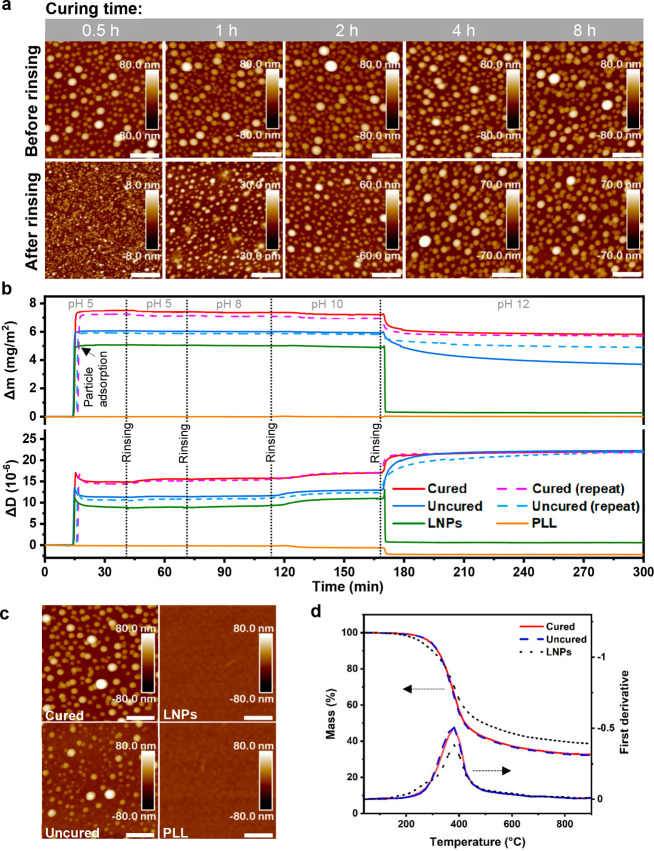Figure 4.
Intraparticle curing of the hy-LNPs20 in dispersion state (∼0.2 wt %) and the resistance of the (4 h) cured particles against dissolution in acetone-water (3:1, w/w) and different pH as well as their thermal stabilities. (a) AFM height images of 0.5–8 h cured hy-LNPs20; samples were measured before and after rinsing with acetone-water (3:1, w/w) (scale bar: 400 nm). (b) QCM-D results of the in situ adsorption of the cured and uncured hy-LNPs20 and the regular LNPs, and their response to the pH between 5 and 12. PLL was used as an anchoring polymer for particle adsorption to gold substrates, and hence the response of PLL to pH change was also monitored. (c) AFM height images show particle morphology of the dried samples after QCM-D experiments (i.e., after treatment at pH 12). The scale bar is 400 nm. (d) Residual mass (%) and first derivative of the residual mass of the dry particles determined with TGA at a heating rate of 10 °C/min.

